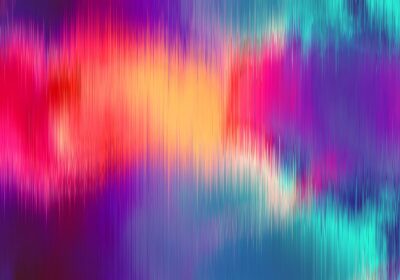
Many of us watch the swirling colors of rustling autumn leaves without thinking much about listening to its pink noise; gaze at the majestic roll of ocean waves or the cascading beauty of a waterfall without considering a spectrum of sonic hues that add to the pleasure and comfort of the experience.
But by paying closer attention to the colors of sound, we open ourselves to richer, calmer, more mindful moves through our daily lives which can also aid in everything from a better night’s sleep and alleviating stress to easing chronic physical ailments.
Hear the rainbow
It’s easy to understand the colors of sound as they are comparable to the colors of light. For example, just as white light contains all the colors of the light visible to the human eye, white noise also emits all audible frequencies to the human ear.
In musical terms, frequencies are spaced out in intervals that our ears find pleasing, and gives a sound to its unique tone or timbre. Everyday noise — such as the sounds of rustling leaves or a truck driving up a street — are sporadic waveforms, which have a random distribution of frequency and amplitude.
Then there are the sonic hues: a mix of varied frequencies, which we as humans can hear, blended with other tonal layers and all playing at the same time in a random, unpredictable chorus that can be heard almost simultaneously, unless the sound is traveling from a distance, as with the far away sound of thunder.
I’ve come to discover that it’s also a wonderful soundtrack for my long days of writing, and is also helpful in calming my mind to get a better night’s sleep.
In recent years, pink noise — which encompasses nature sounds like ocean waves, falling rain, or rustling leaves — has become “the darling of the noise spectrum,” writes Meghan Neal in The Atlantic, upstaging white noise — more akin to a whirring fan, a humming air conditioner or the sound of static — as the preferred sound option for sleep or concentration.
This content is imported from youTube. You may be able to find the same content in another format, or you may be able to find more information, at their web site.
According to WebMD, pink noise reduces the difference between the background hum and jarring noises like a door slamming or car honking that can jolt you out of your sleep. It may also “help you fall asleep faster and keep you in a deep sleep longer.” So you’ll feel more rested in the morning when you wake up.
Because pink noise has the ability to mask a variety of sounds, it’s great for alert yet relaxed concentration and has been proven useful for those who suffer from tinnitus (ringing in the ears) — myself included.
Brown noise is a deeper version of pink noise, consisting of more bass tones and low-frequency. Think of a low roaring, strong waterfalls, or thunder. It draws its name not from the color but from the fact that the signal is akin to the “random walk” pattern produced by the Brownian motion: the movement of particles in liquid. It was named for the Scottish botanist Robert Brown, the first to study such fluctuations in 1827.
Blue noise, also known as azure noise, is more difficult to discern because of its high frequencies and very few bass tones — like the hiss of a kinked water hose. (And since this sound can be pretty harsh at high volumes, it’s not the go-to color option for most sound therapy machines.)
Audio engineers use blue noise for dithering, a process where noise is added to a track to smooth out the sound and lessen the audibility of distortions.
And then there’s black noise: the sound of silence (or near silence).
Healing with sound
In an article for CNET, writer Amanda Capritto explains that all the different “colors” of noise resonate with different amplitudes at different frequencies — basically the way our ears process sound and drown out unwanted noises. Which is why there are many, with sound bath facilitators to deejays finding ways to use different sounds to aid with sleep and other maladies.
As a certified sound and yoga therapist, Fawntice Finesse works in mental health and recovery and has become among the most sought-after sound bath healers in Southern California. In 2019, I hired Finesse to lead sound bath experiences for a series of women’s wellness and health fairs for APLA Health.

She has one of the most elaborate sound setups I’ve seen. In her work, Finesse, a flutist, uses a gong and 17 Tibetan singing bowls, among other instruments to create “as many paths of sound frequencies as possible,” a continuous flow of sound which affects the brain and the nervous system.
”That’s what the gong does; that’s what the singing bowls do,” she says, “it all encompasses an infinite amount of frequencies — which is the similarity between white noise and the specific instruments that I use.
“It’s all about the flow of the bodily system,” she continues, “and also waking up what it is in our bodies that has gone to sleep. A lot of times the sleepy part of us is connected to disease, or dis-ease or discomfort.”
She can attest to this first hand. In 2012, while getting her certification in sound, Finesse was in a car accident. She suffered from aphasia — a condition that robs you of the ability to speak, write and understand language, both verbal and written — resulting from a brain injury. Utilizing her training, Finesse turned to sound healing. She mixed a layer of frequencies with singing bowls, rain sounds, wind chimes, and other restorative sounds to treat her brain injuries. She eventually completed her sound healing certification in 2014.
“My car accident really showed me that when you calm the nervous system all other healing can happen,” she says. “So when someone comes to me and says they have tinnitus I’m coming at them with a lot of frequencies that may or may not be able to help them hear clearly again.”
“Or,” she continues, “it may engage another cell or another organ that’s actually causing the symptoms of another physical ailment or touch them emotionally, like Mahalia Jackson does with her voice, where there’s a release, and sometimes it’s tears. That’s the clearing and the flow of the bodily system – the opening of it. A great sound, like hers, a really good gospel voice, there’s so many layers, and that’s what the gong and cymbals are to me.”
The way sound works in the body is all about nerve connection: Sound goes into the eardrum and — even if we can’t hear a particular note or frequency — the sound vibrates in our ear canal which is connected to the vagus nerve, which connects to every major organ and cranial nerve, including the parasympathetic nervous system that controls our relaxation response.
 The late actor Chadwick Boseman found calm in the sound of a djembe drum, said Viola Davis in an interview with USA Today. “One of the things that he carried everywhere was his djembe drum, which is called a talking drum in Africa. And he carried it himself,” Davis remembered about her Ma Rainey’s Black Bottom co-star: “He said ‘Viola, wherever I go, I carry my djembe drum. I do it for me. I play this drum for me, for my healing.’ It felt like he was playing that for God, for himself. There are no words to describe the playing because I love the djembe drum, but listening to him play when he had breaks in that trailer was just phenomenal.”
The late actor Chadwick Boseman found calm in the sound of a djembe drum, said Viola Davis in an interview with USA Today. “One of the things that he carried everywhere was his djembe drum, which is called a talking drum in Africa. And he carried it himself,” Davis remembered about her Ma Rainey’s Black Bottom co-star: “He said ‘Viola, wherever I go, I carry my djembe drum. I do it for me. I play this drum for me, for my healing.’ It felt like he was playing that for God, for himself. There are no words to describe the playing because I love the djembe drum, but listening to him play when he had breaks in that trailer was just phenomenal.”
Supersonic
Pink noise videos on YouTube at bedtime have helped ease my ear ringing over the recent months — and I’ve incorporated other auditory hues during the day. Using colors to think about sound “in a way, these are subjective things,” says sonic explorer Mark “Frosty” McNeill whose online library of nature sounds are among my favorites, “but I think it’s a fun way to start thinking of sound in a way that can start engaging the other senses; how can those things have relationships that aren’t on a surface level.”
As the founder of Dublab, a Los Angeles-based online radio station that has been exploring wide-spectrum music since 1999, McNeill has focused on sharing transcendent sonic experiences. His latest project, Nose Music, “is meant to get people thinking about the relationship to their senses and an exchange between senses,” he says.
Nose Music is an album of scents corresponding to 10 classic albums including Another Green World by Brian Eno, Nina Simone’s Wild Is the Wind, King Tubby Meets Rockers Uptown by Augustus Pablo, and Alice Coltrane’s World Galaxy.
“So, people can get a box set with 10 fragrances and in your own environment, you can listen to the music and smell the fragrance. Or you might choose to go out on the town smelling like The Velvet Underground & Nico and embody this album’s spirit.”
McNeill says the whole point is to get people to recognize sound not as an invisible entity, but as an ever-present relationship in their lives that connects them to the world.
“A lot of people think about these more static ways of sound existing, like sounds on my radio sitting on the table, sounds on my car stereo or sounds in my living room, but it’s also as you move around a space or the sonic architecture of a space, I like to think about how we as humans can change sound through our movements but also how, in the past year I’ve been thinking about recorded music. In one way you record a song and it’s frozen.
“But,” he adds, “recorded music is not as static as we think because all of us every day, every moment of every day, we’re shifting emotionally, we’re shifting physically — like if you’re cold and your bones are aching or if you’re hungry or totally satiated — as we’re moving through the world it actually changes the sounds. So, a recorded song changes infinitely as the people around time, space and place, interact with it.”
Because, as he suggests, being aware of what you’re putting into your system sound-wise is as important as what you’re putting into your body food-wise. “The more you begin to do this kind of deep listening helps you have a greater awareness of the world around you, and your impact on it.”
Original article here






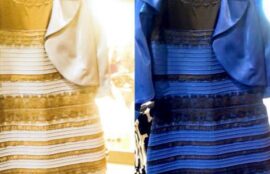
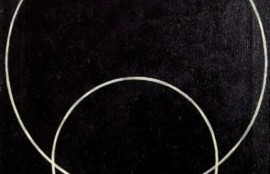
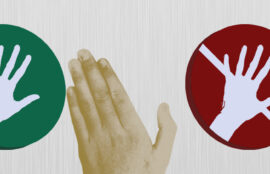

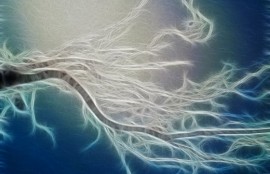

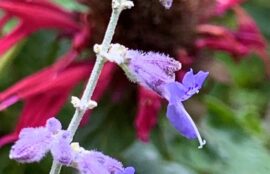



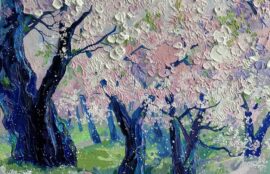





Sorry, the comment form is closed at this time.